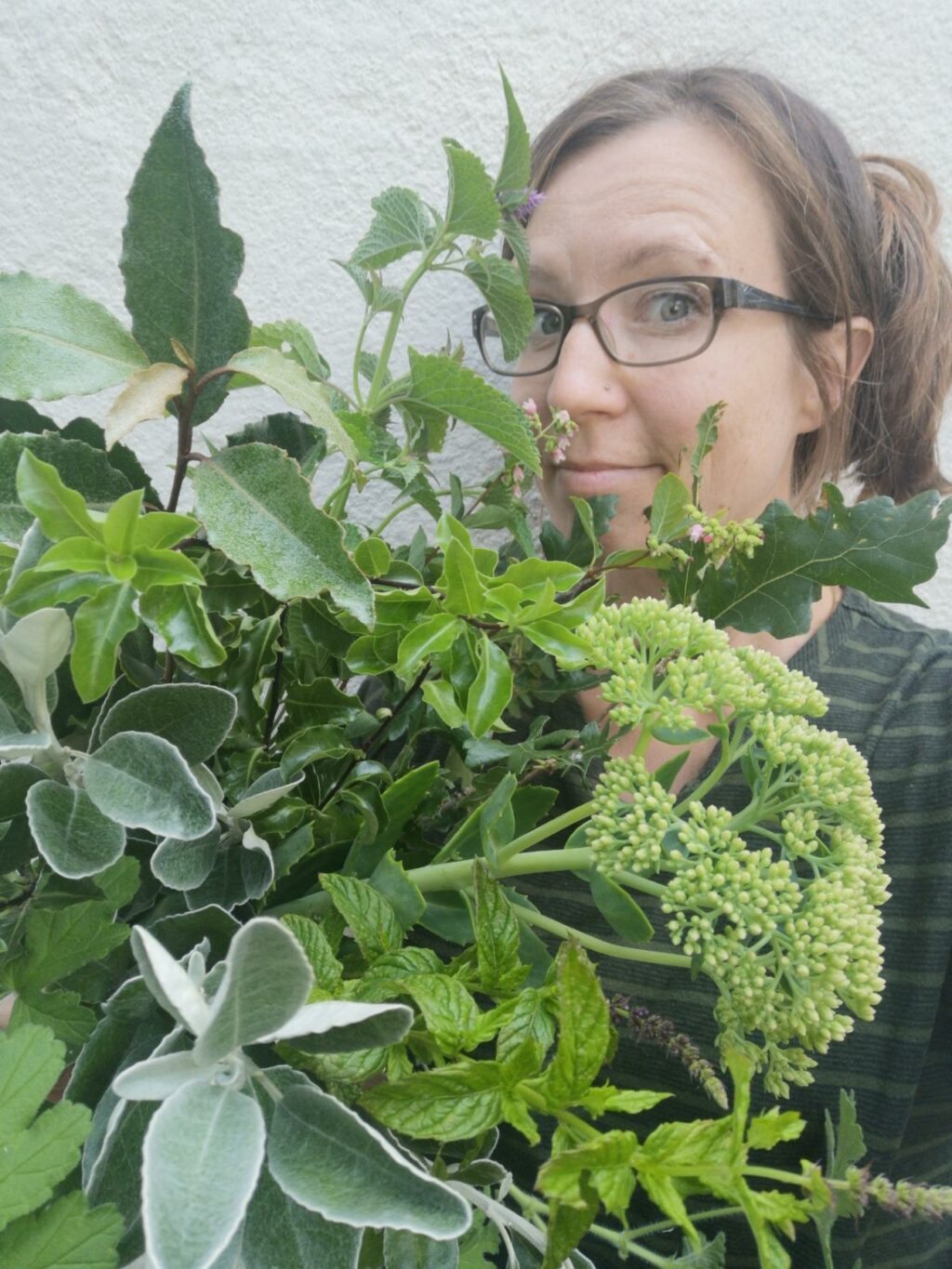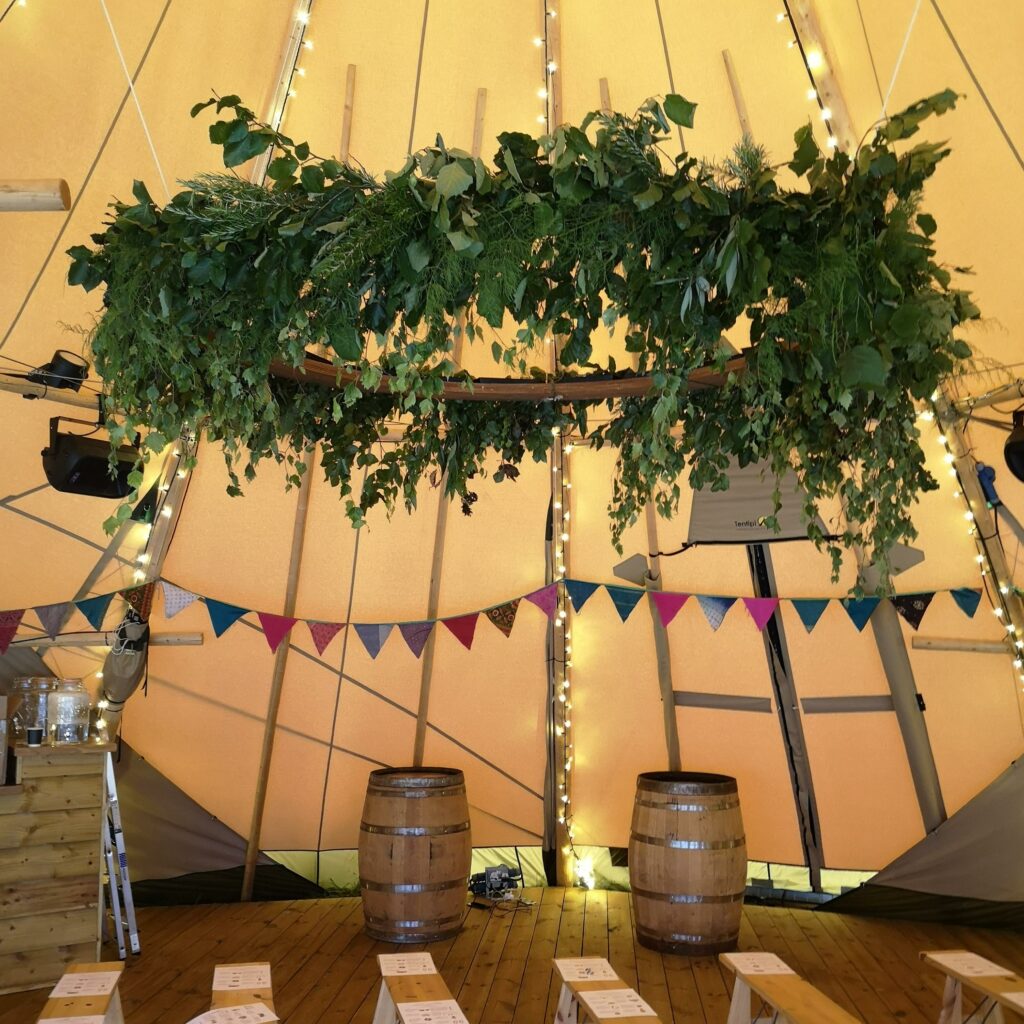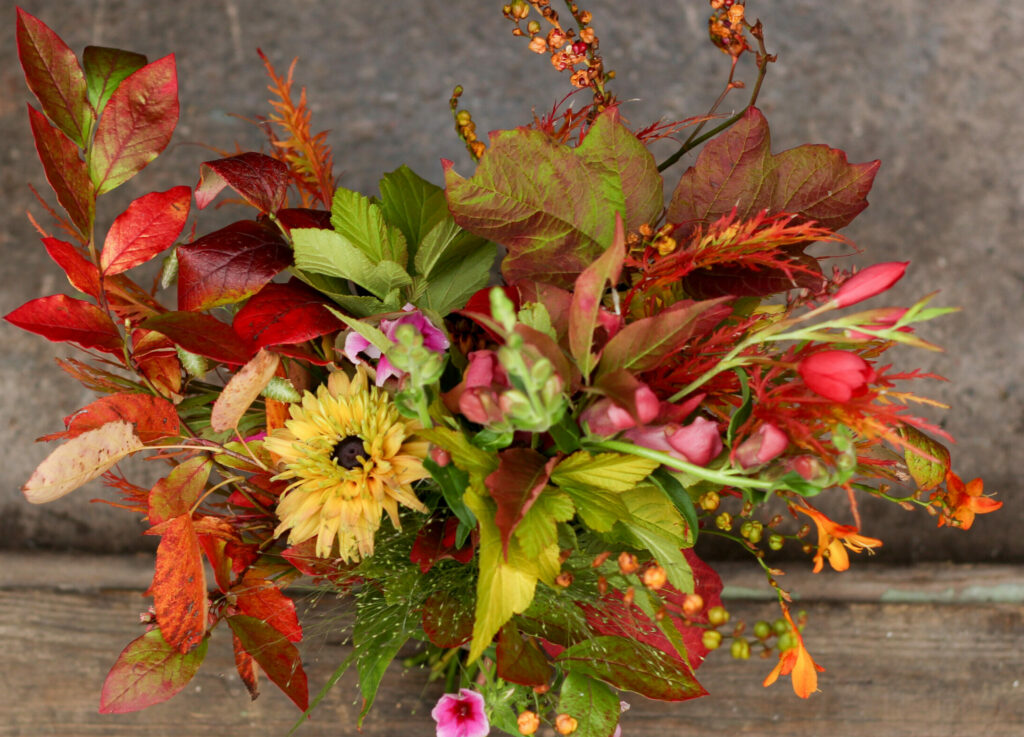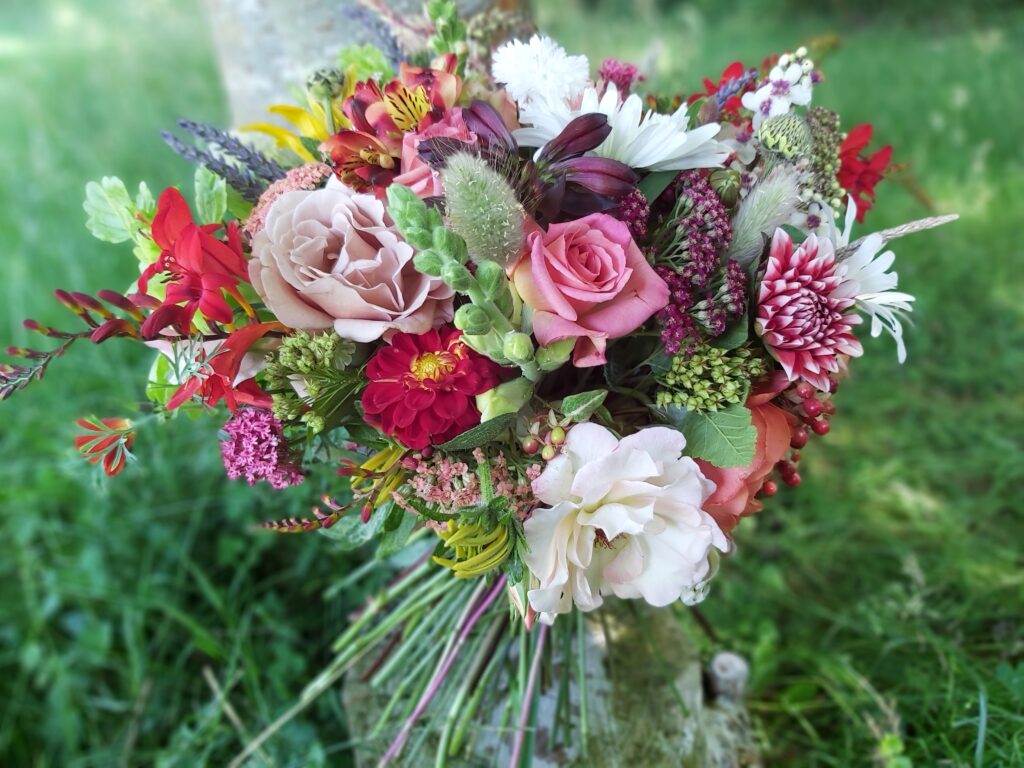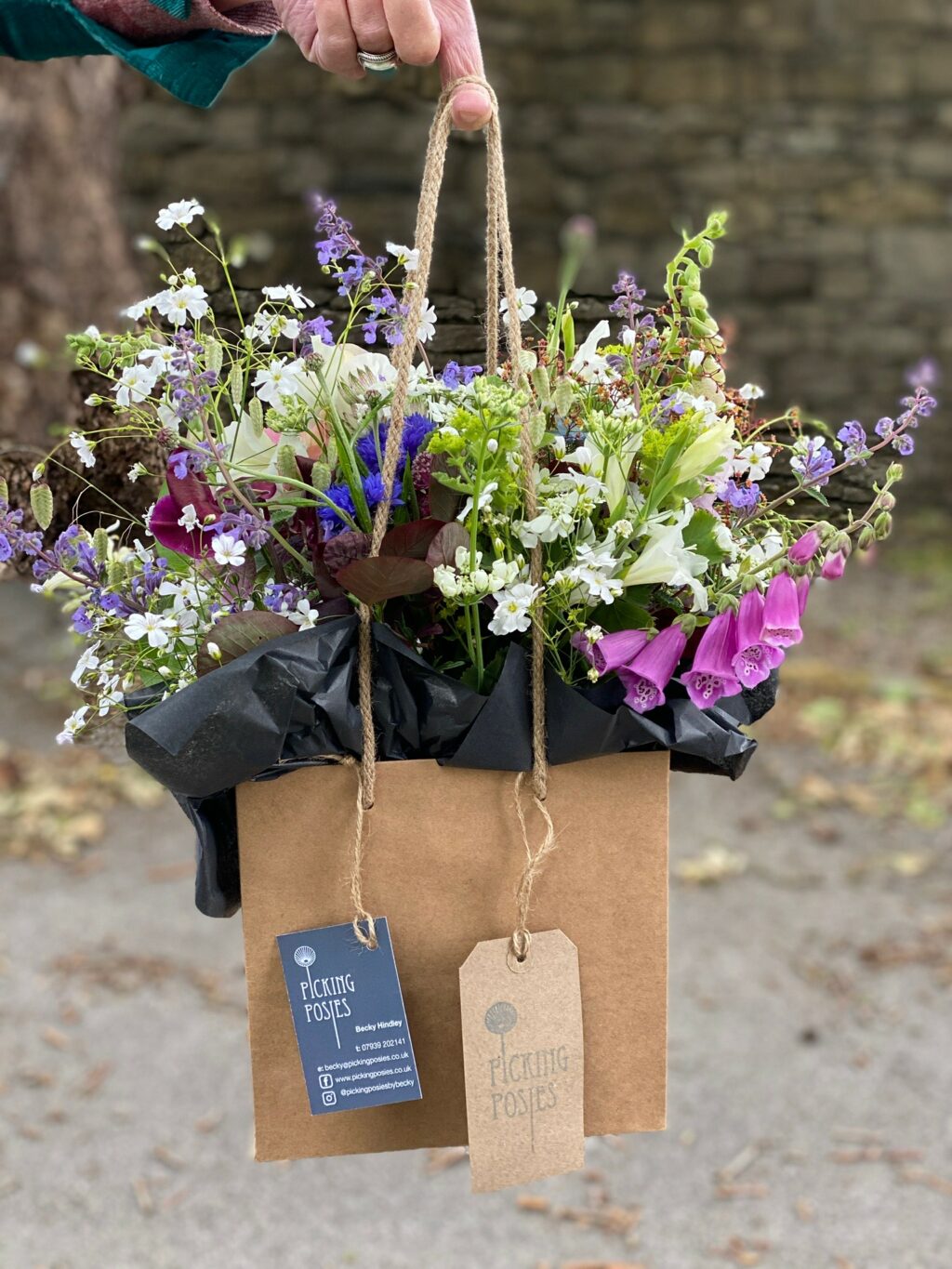Foliage isn’t just ‘greenery’. The photosynthesis factories of leaves are so diverse in colour and form, that you can sometimes do without flowers entirely: emerald, lime, olive, silver, variegated, viridian, red… matt, glossy, spiky, feathery, linear, bushy… the variation is endless.
Whatever your preferred hue, green is the neutral colour in floral design. Adding foliage to your bouquets gives you extra drama for your dosh, filling out between other more expensive stems. It offers structure, interesting textures and sometimes trailing lines to an arrangement, and separates and supports the flowers so they can be appreciated individually, rather than a block of monochrome with indefinable edges, or a riot of colours fighting for attention.
We live in a relatively ‘green and pleasant’ land, so there are plenty of places to find rich pickings. Once you’re sure you have permission to forage two key questions are 1) Is the material safe to handle? 2) Does it last well in a vase?
Research the former, and always wear gloves/ wash your hands after handling plants. And while foliage often stands a better chance than flowers at ‘holding up’ in water, it’s important to pick it at the right stage in its life cycle. When cutting, look for woody rather than fleshy green stems, and don’t pick foliage with newly unfurling leaves as they will be too soft to hold and the entire stem will likely wilt.
When to cut
To make the most of your foliage, and as a general rule for cutting any plant material, cut early in the day before moisture has been lost through the leaves. Transpiration weakens the cells, making your plant soften and less able to cope with having its life force cut off. Remove any leaves below the water line as this causes bacterial build up, and if possible, leave your stems to drink in deep water in a cool dark place for at least a few hours before handling. Cut stems with a sharp tool on a slanted edge, and do so each time you refresh the vase water.
